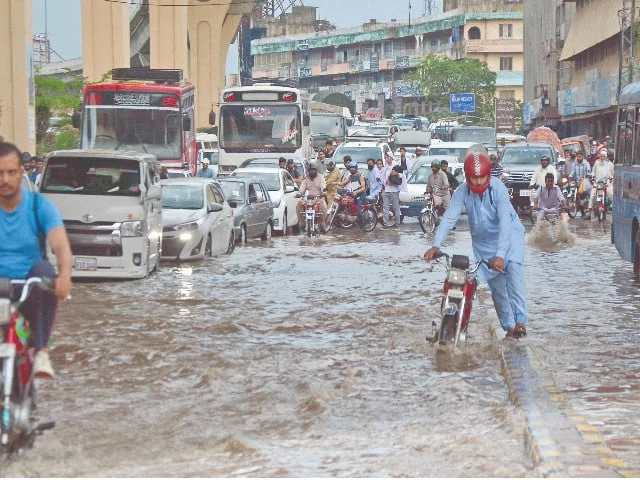Rawalpindi:
Deprived of immediate rescue measures, the victims of the strongest precipitation of this year were entirely left to their own devices by the administration of the Rawalpindi district.
Due to unusually strong precipitation this year, the district administration has also announced that the flood season in Rawalpindi will officially end on September 1. Usually the season begins with the pre-Mousoon rains on June 15 and lasts until August 15.
Despite a general devastation, the administration did not provide financial assistance to families seriously affected by floods or to those who have lost dear beings, citing an acute financial crisis and the unavailability of funds.
With the reopening of all public and private educational establishments on September 1, nine flood rescue camps created in schools and city colleges will also be dismantled.
The officials revealed that, despite the severity of this year’s floods, only one family did not require shelter in the rescue camps managed by the government – mainly because no provision had been taken for food, medical aid or basic support.
Rawalpindi has endured some of the most destructive floods in recent memory in 2025. Torrential rains left residential areas, stores, squares and markets overwhelmed under three to five feet of water, destroying goods with a value of millions of rupees. However, no compensation has been extended to residents, traders or traders. Five people drowned during the floods, but even their families received no financial support.
This negligence provoked a deep anger among citizens, victims and the business world towards the government and the administration.
From September 1, with the lifting of the emergency of the floods, the district control room will cease operations 24 hours a day and will return to routine office hours. Officials of various services deployed in the central control room will be withdrawn, although civil defense volunteers and rescue 1122 will continue to monitor the risks linked to floods.
During the season, the city of Rawalpindi and the canton areas experienced five major floods. The low and wealthy districts have been flooded, including residential and commercial districts. Among the victims, there was a retired colonel who drowned alongside his daughter, whose body has not yet been recovered.
The most affected localities included the colony of Nadeem, the Javed colony, Arya Mohallah, Dhoke Elahi Bakhsh, Dhoke Khaba, Amarpura, Pirwadhai, Fauji Colony, Zia-Ul-Haq Colony, Dhoke Hassu, Dhoke Ratta, Mohanpura, Raja Bazaar, Mochi Bazaar, Raja, Raja Bazaar, Mochi Baza, Trunga, Raja Bazaar, Mochi Baza, Trunga, Raja Bazaar, Mochi Baza, Trunga, Raja Bazaar, Mochi Baza, Trunga, Raja Bazaar, Mochi Baza, Trunga, Raja Bazaa Bazaar, Motor Bazaar, Dangi Khoi, Tench Bhatta, People Valley, Sharon Colony, as well as areas adjacent to the Sawan river, Nala Lai and 15 seasonal evacuates.
Helded by financial constraints, the district administration has not even studied the destruction caused to houses, markets and residential areas, leaving the victims entirely to fend for themselves.
The president of the Citizens’ Action Committee (CAC), Malik Zaheer Awan, observed that four to five major floods struck Rawalpindi this year, causing losses of millions of rupees to traders and residents. Despite repeated calls, the administration did not undertake damage.




